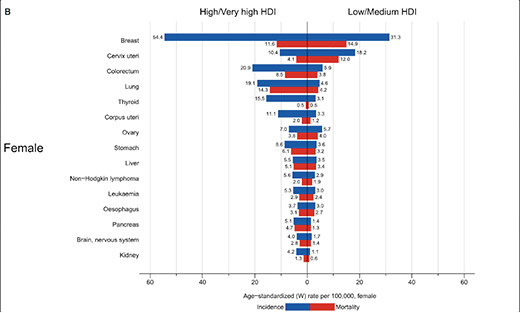
Why does it occur?
Cervical cancer is, in the vast majority of cases, due to infection with a high-risk human papilloma virus (HPV).
HPV is transmitted during sexual intercourse. HPV infection is commonplace, especially at the start of sexual activity.
HPV affects both men and women. The majority of adults of both sexes have had an HPV infection at least once. These infections are asymptomatic and resolve spontaneously in the majority of cases.
There are about a hundred types of HPV and only the dozen so-called high-risk (or oncogenic) HPVs can cause cervical cancer. The most common and dangerous are HPV 16 and HPV 18.
The persistence of a high-risk HPV in the cervix can trigger a cascade of events that will lead to cancer several years later.
Certain factors promote the development of an HPV infection into a pre-cancerous lesion or cancer: smoking, acquired immunosuppression (HIV infection, immunosuppressive treatments). Changes in the vaginal microbial flora could also be a factor.
The first stage is the occurrence of a pre-cancerous lesion, often called dysplasia or CIN (intraepithelial neoplasia).
Some dysplasias can subsequently progress to cancer, most often in 10 to 15 years.
It is therefore important not to confuse HPV infection (which is diagnosed by an HPV test), pre-cancerous lesion (which is detected by smears) and cancer (which is diagnosed by a biopsy or conization).

(evolution of the cervix from HPV infection, to dysplasia, carcinoma in situ, then invasive cancer)
Historical risk factors for cervical cancer (early sexual intercourse, multiple partners, poor hygiene) are actually risk factors for infection with one or more high-risk HPVs.
High-risk HPVs can also cause other cancers such as those of the vulva and vagina in women, penis in men, anus and throat in both sexes.
The diagnosis of a virus-induced cancer can lead to a search for other locations of the virus (example: proctological and ENT examination in the case of cervical cancer).





